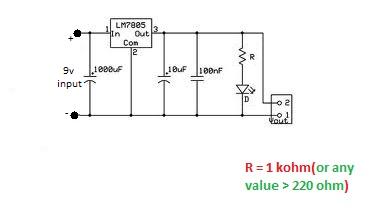Follow along with the video below to see how to install our site as a web app on your home screen.
Note: This feature may not be available in some browsers.
hello,
Here is the Circuit which i have used in number of projects :
View attachment 59981
Good Luck


Haha . . u have placed resistance above led.. :-D
remind me of something>>> remember current limiting resistance placement(@Tahmid) .. :twisted:
hello,
Here is the Circuit which i have used in number of projects :
View attachment 59981
Good Luck
yes he can use any value of resistance greater than 220ohm ..
value of R is related with glow of led..
@ Tahmid-- yes you are right!!
@cameo -- you can use any value upto 10k(360.. 450.. 750.. 1k ..2.2 k so on) .. the higher the resistance the lower will be current and it will glow dim!!!